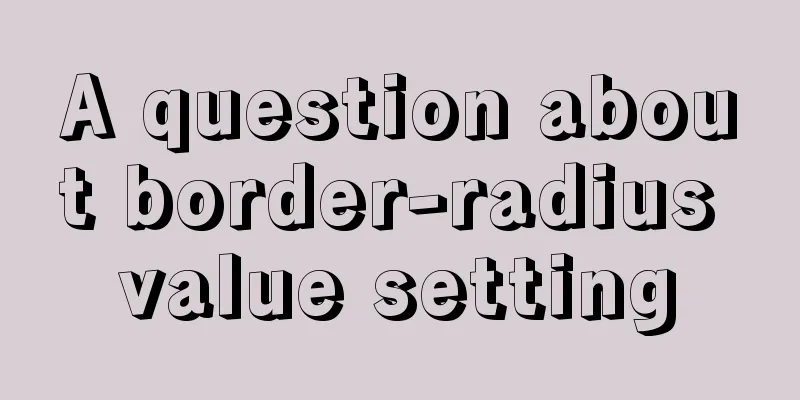Ten Experiences in Web Design in 2008

|
<br />The Internet is constantly changing, and BusinessWeek.com has worked with a group of experts to come up with the rules that today's web designers must follow. (Matt Vela) As soon as the Internet appeared, it demonstrated its powerful power. It not only changed the way people work, but also changed the way people date. It can be said that it took the world on a roller coaster ride and made everyone dizzy. Microsoft, Netscape, and other companies began competing in browsers, and a competition for web standards also began. At the same time, with the rise of Facebook, Flickr and YouTube, the Internet places more emphasis on collective intelligence and socialization. From boom to bust to boom again, funds are flowing like crazy, and there seems to be no end in sight for the development of the Internet industry. The Web also attracted evangelists, theorists, and the like, many of whom predicted that new technologies would emerge from the Internet—Jini, DHTML, and others—but none of them took off. But seemingly simple technologies—metadata, XML, CSS—have all achieved breakthrough advances. The evolution of web design from the excitement of HotWired to the applications of Google has continued, sometimes seemingly contradictory, but has revolutionized the Internet. To make things clearer, BusinessWeek.com asked many prominent figures on the Internet to come up with some guidelines for web design. Participants included Internet theorist, Don Norman, partner at Nielsen Norman Group, NYTimes.com's design director, Khoi Vinh, and John Maeda, president-elect of the Rhode Island School of Design. These ten web design commandments for 2008 were compiled from our survey. A list of all contributors is given at the end of the article. 1. Don’t abuse Flash Adobe's animation technology makes the Internet more powerful, from Nike's very exaggerated homepage animation to the web banners used by many advertisers. But this technique can be easily abused. Too many animations are not only useless but can also slow down the user's web browser. 2. Don’t let ads block the content of the website .<br />It’s true that advertising is crucial to the survival of a website, but studies have shown that once pop-up ads and full-page ads block the content of the website, their effectiveness will be greatly reduced, and it will also affect whether readers will come back to patronize. An ad that can scale up and down based on the reader's needs would be more appropriate. 3. Don’t make the web page look cluttered .<br />The web page is a hodgepodge, but a website that lacks a reasonable structure often makes browsing information very difficult. Amazon.com considers clarity of web page hierarchy as the most important criterion during the design process. 4. Don’t overuse glass reflection effects <br />Apple often designs some beautiful effects. But some experts say the company's move to add glass reflections to photos of all its products is not worth widespread adoption because the design element is already overused. 5. Don't add or subtract letters from your company name <br />There's a popular way to name websites these days, but it's getting weirder and weirder. Many websites either add multiple vowels to words or intentionally remove some when naming them. Such as Flickr, Smibs, Meebo, etc. These names are indeed easy to remember, but they are destined to become outdated. Check out more web design tutorials on this site. 6. Adapt to change <br />Designers say that in addition to noticing changes in network bandwidth, ordinary text is also quietly rising. Mainstream sites such as Craigslist are leading the trend, while companies like Coudal Partners and John Gruber's famous Daring Fireball blog are also at the forefront of the trend. 7. Make a deep impression <br />It is no longer enough if a website just looks pretty. Sites like Facebook and YouTube attract users with content and features. The key to creating a website is to attract and retain the user's attention. 8. To make the website social, Web2.0 has penetrated into every aspect. MySpace and other websites just followed the trend and allowed users to communicate and interact within the website. Today's designers have added the same elements to various websites, such as advertisements, online office software, etc. 9. Use proven technologies <br />Wikipedia, YouTube, Facebook and similar websites have become a part of Internet users' lives. Incorporating these elements into your website keeps your users engaged while providing functionality they are familiar with. 10. Content is king <br />Although this sentence has become a cliché, it is still very important. A beautifully designed website can certainly attract attention, but it can never cover up the lack of content on the website. |
<<: Detailed tutorial on deploying Apollo custom environment with docker-compose
>>: Three uses and differences of MySQL not equal
Recommend
Implementation of Vue package size optimization (from 1.72M to 94K)
1. Background I recently made a website, uidea, w...
8 powerful techniques for HTML web page creation
<br />Although there are many web page creat...
Several reasons for not compressing HTML
The reason is simple: In HTML documents, multiple ...
Detailed explanation of how to create MySql scheduled tasks in navicat
Detailed explanation of creating MySql scheduled ...
MySQL Workbench download and use tutorial detailed explanation
1. Download MySQL Workbench Workbench is a graphi...
Detailed graphic tutorial on how to install the unzipped version of MySQL under Windows 10
MySQL installation is divided into installation v...
Let's talk about the LIMIT statement in MySQL in detail
Table of contents question Server layer and stora...
Detailed explanation of MySql installation and login
Check if MySQL is already installed in Linux sudo...
Implementing a random roll caller based on JavaScript
This article shares the specific code of JavaScri...
Brief analysis of MySQL union and union all
In the database, both UNION and UNION ALL keyword...
Detailed explanation of CSS label mode display property
The code looks like this: <!DOCTYPE html> &...
MySQL Installer Community 5.7.16 installation detailed tutorial
This article records the detailed tutorial of MyS...
Detailed explanation of the implementation of shared modules in Angular projects
Table of contents 1. Shared CommonModule 2. Share...
MySQL cursor principle and usage example analysis
This article uses examples to explain the princip...
Docker renames the image name and TAG operation
When using docker images, images with both REPOSI...









